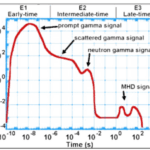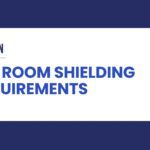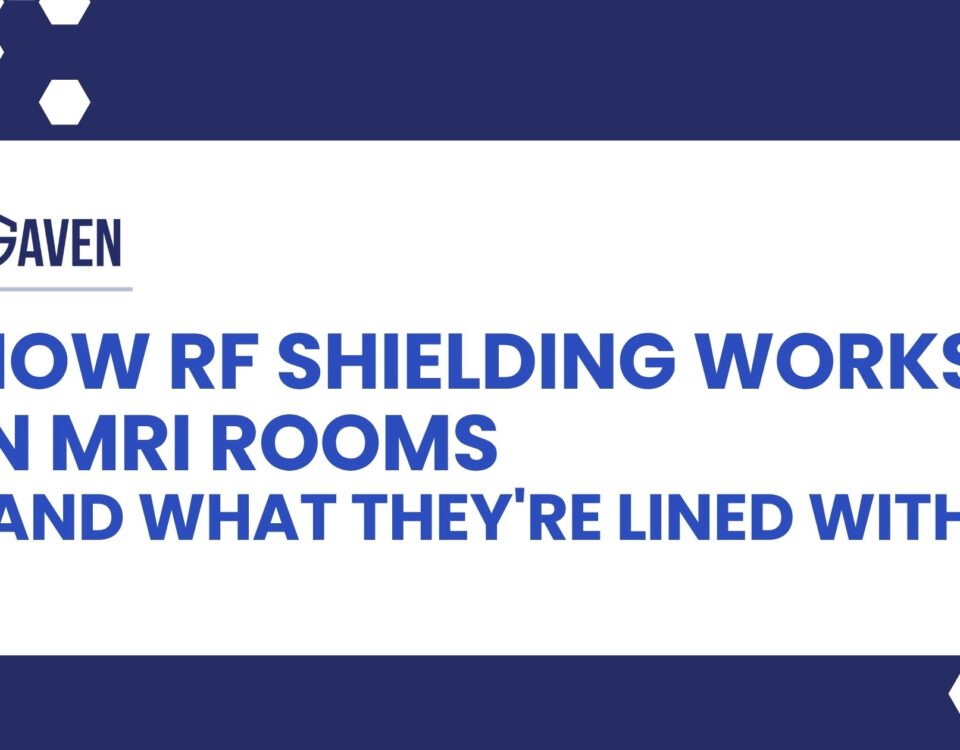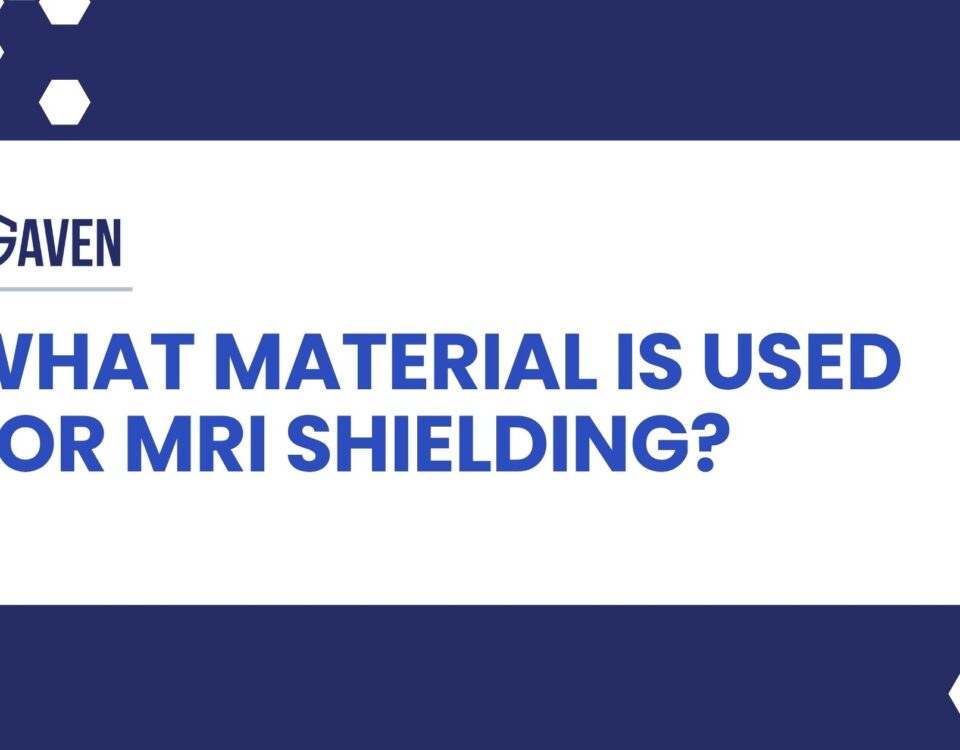


Shielding 101
February 19, 2024


MRI Room Shielding Requirements
July 8, 2025In any MRI suite, shielding isn’t just an engineering consideration—it’s a clinical requirement. Without properly designed shielding systems, magnetic fringe fields and radio frequency interference (RFI) can compromise safety, degrade image quality, and even disrupt the function of nearby equipment. Understanding the interplay between active and passive MRI shielding is key for healthcare planners, facility managers, and imaging specialists looking to build or upgrade MRI environments that are safe, compliant, and high-performing.
What is active and passive shielding in MRI?
Active shielding in MRI refers to the use of specially designed secondary magnetic coils that are built into the MRI scanner itself. These coils generate a magnetic field that opposes and cancels out the scanner’s outer fringe field, reducing its spread beyond the scanner bore. This design significantly minimizes the MRI system’s spatial footprint, enabling installations in space-constrained environments without compromising adjacent room safety. Most modern high-field scanners (1.5T and above) incorporate active shielding as a standard feature, helping facilities meet ANSI/AAMI 4.2 Gauss and 5 Gauss spatial zoning limits without the need for excessive structural accommodations.
Passive shielding, by contrast, uses physical materials—typically high-permeability ferromagnetic steel—to contain or redirect the magnetic field. These materials are installed in walls, ceilings, or floors around the MRI suite to absorb and reroute magnetic flux. Materials like silicon steel or mu-metal are selected based on their magnetic permeability and saturation threshold, ensuring they effectively divert stray flux without themselves becoming sources of interference.
Each method is designed to control different aspects of the MRI system’s influence on its surrounding environment. Active shielding is internal to the magnet and helps reduce structural demands during installation. Passive shielding adapts to site-specific conditions and offers external containment of fringe fields that can extend far beyond the scanner room—sometimes by several meters, especially with 3T or 7T systems.
Both are critical for maintaining:
- Compliance with 5 Gauss line regulations, which limit public access to areas with fringe field exposure above 5 Gauss (0.5 mT), a level known to interfere with medical devices like pacemakers.
- Safety for staff, patients, and nearby equipment, especially in mixed-use healthcare facilities or imaging suites adjacent to surgical or data-intensive spaces.
- Predictable spatial planning in healthcare and research facilities, allowing architects and engineers to design efficiently around MRI constraints.
What is the difference between active shielding and passive shielding?
The primary difference lies in the mechanism of action and the location of the shielding.
Active shielding is engineered into the MRI magnet at the time of manufacture. It cannot be altered once installed and requires no additional structural components. The active coils are calibrated to limit fringe fields based on the system’s magnetic strength (e.g., 1.5T, 3T). By creating an oppositional magnetic field, active shielding reduces the effective 5 Gauss boundary and eliminates the need for large-scale ferromagnetic shielding in many installations.
Passive shielding, on the other hand, is installed at the facility level. It uses dense steel plate or other ferromagnetic materials to physically absorb and redirect stray magnetic fields that the active shield cannot completely eliminate. It’s often required in environments where active shielding alone is insufficient—such as older buildings with adjacent imaging systems, operating rooms, or sensitive lab equipment.
Active vs. passive shielding MRI: Key contrasts
| Factor | Active Shielding | Passive Shielding |
| Mechanism | Magnetic field cancellation via coils | Magnetic flux redirection via materials |
| Location | Integrated within MRI magnet | Built into room architecture |
| Cost Impact | Higher magnet cost, lower structural cost | Lower magnet cost, higher facility cost |
| Structural Load | Minimal added mass | Adds significant weight to walls/floors |
| Flexibility | Fixed during manufacture | Adjustable to site conditions |
Both systems are often used together to achieve optimal shielding outcomes. At Gaven Industries, our engineering team evaluates magnetic field simulations to determine how to integrate the two approaches for each project. As John J. Gaviglia, Founder of Gaven, explains:
“Selecting the right shielding configuration starts with understanding the specific interference challenges at your site. Every MRI installation is unique.”
What is the purpose of radiofrequency shielding in the magnet room?
MRI shielding doesn’t stop with magnetic containment. RF shielding is equally critical in ensuring diagnostic accuracy. MRI systems rely on highly sensitive RF signals to capture internal anatomical data. Even minor external interference—from cell towers, elevators, telemetry systems, or fluorescent lighting—can introduce artifacts into scans.
This is where RF shielding in MRI comes into play. The magnet room is typically designed as a Faraday cage—a fully enclosed, electrically continuous structure that blocks external RF signals and contains the MRI’s own transmissions. This isolation is necessary because MRI imaging sequences depend on detecting minuscule radio signals emitted by the patient’s hydrogen atoms in response to the scanner’s RF pulse. These signals are on the order of nanovolts, meaning even a slight amount of ambient EMI can corrupt them.
At Gaven Industries, our RF shielding designs include:
- Soldered copper or galvanized steel panel systems that create seamless enclosures
- Shielded HVAC waveguides for airflow without RF leakage
- Power and data line filters engineered for medical-grade EMI suppression
- Failsafe MRI air seal doors that maintain RF integrity at every entry point
All of these components are selected to meet attenuation levels per MIL-STD-285 and IEEE-299, ensuring reliable performance across a wide frequency spectrum. Without proper RF shielding, facilities risk:
- Compromised image quality, including ghosting, signal dropout, and noise artifacts
- Lengthened scan times or rescheduling, driving up operational costs and patient dissatisfaction
- Regulatory noncompliance with health and safety standards, such as NFPA 99 or IEC 60601-2-33
“An MRI’s ability to detect subtle physiological changes is only as good as the environment it operates in. RF shielding makes that precision possible.” – John J. Gaviglia
What shielding is required for MRI?
MRI suites generally require three categories of shielding:
- RF shielding – To block electromagnetic noise and ensure imaging fidelity
- Magnetic shielding – To control the spread of static magnetic fields (fringe fields)
- Acoustic shielding – Optional but increasingly common to reduce sound pressure levels generated by MRI gradients, which can reach up to 120 dB during peak sequences
Types of MRI shielding:
- Active magnetic shielding: Built into the magnet for fringe field containment
- Passive magnetic shielding: Steel walls/floors for external field control
- RF shielding: Faraday cage design using copper or galvanized steel panels
- Component shielding: Doors, windows, and passthroughs with integrated shielding elements
At Gaven Industries, we deliver MRI shielding systems that combine all three where required, engineered to site-specific challenges and verified through post-installation RF and magnetic field testing. This includes detailed Gauss mapping, RF attenuation verification, and pre-scan validation protocols—all supported by Gaven’s decades of experience in shielding for hospitals, imaging centers, and research environments.
Where is active magnetic shielding located in MRI?
Active magnetic shielding is located entirely within the MRI scanner housing. These secondary coils are placed outside the primary magnet windings and are precisely engineered to create a counter-field that reduces the spatial footprint of the MRI’s magnetic fringe field.
This configuration reduces magnetic exposure zones (also known as “Gauss lines”) that would otherwise extend into adjacent rooms, hallways, or upper/lower floors—an issue especially common in older buildings not designed for MRI-grade installations. According to major magnet provider specifications, active shielding can shrink the 5 Gauss line radius from 10 meters to as little as 2–3 meters for a 1.5T system, depending on configuration.
Because this is part of the magnet’s original design, active shielding:
- Does not require building reinforcement
- Is factory-calibrated to the system’s field strength
- Cannot be modified post-installation
This makes it a powerful design advantage. In many cases, it enables MRI placement in otherwise restricted areas of a healthcare facility—such as upper floors or between occupied suites—without compromising safety. For facilities with spatial constraints—such as MRI rooms near surgical suites, PACU, or data centers—active shielding is essential to reduce risk without structural redesigns.
As noted by Gaven founder John J. Gaviglia:
“Active shielding solves problems that you don’t want to fix with concrete and steel. It gives architects breathing room—literally.”
What material is used in Faraday cage for MRI?
The RF shielding material for MRI applications must be both conductive and corrosion-resistant. At Gaven Industries, we primarily use:
- Soldered copper panel systems for maximum conductivity and seamless RF isolation
- Galvanized steel panel systems where budget, structural support, or integration needs allow
Copper remains the gold standard due to its superior attenuation performance, especially at higher RF frequencies. In head-to-head comparisons, copper consistently delivers greater shielding effectiveness across the 10 kHz–100 MHz range, making it ideal for protecting signal fidelity in high-resolution MRI scans. However, galvanized steel is often preferred in hybrid environments or where mechanical durability is a concern, such as high-traffic hospitals or retrofits in mixed-use buildings.
Key characteristics of MRI Faraday cage materials:
- High conductivity for full RF attenuation
- Seamless or soldered joints to maintain electrical continuity
- Grounded to a common point for maximum shielding effectiveness
These materials form the envelope of the MRI room, with Gaven’s integrated systems ensuring every penetration is accounted for—whether it’s air (via waveguide ducts), electrical (via filtered conduit), or medical gases (routed through shielded passthroughs). Our solutions are engineered to meet or exceed attenuation benchmarks established by IEEE-299 and MIL-STD-285.
What shielding is used in MRI?
In practice, MRI shielding is rarely just one type of barrier. Most clinical installations rely on a combination of active, passive, and RF shielding tailored to:
- Magnet strength (1.5T vs. 3T and above)
- Building layout
- Nearby sensitive areas (e.g., labs, NICUs, operating rooms)
- Code compliance (especially for the 5 Gauss line)
Because magnetic and RF fields behave differently, each layer of shielding addresses a different vector of risk. Gaven Industries specializes in comprehensive shielding solutions, including:
- RF-shielded rooms with integrated HVAC and electrical passthroughs
- Shielded doors and windows with guaranteed attenuation levels
- Field-tested magnetic shielding based on Gauss-level modeling
- Site-specific design services to optimize layout and minimize cost
This full-stack approach enables us to deliver shielding systems that are effective, efficient, and customized—whether for a major health system’s diagnostic wing or a compact research facility operating a high-field MRI unit.

What is the cost of active vs. passive shielding in MRI?
The active shielding in MRI cost is typically embedded in the price of the MRI system itself. It’s a design feature determined by the OEM and varies based on:
- Scanner model and field strength
- Magnetic fringe field specifications
- Customization options (e.g., ultra-compact fringe designs)
Since it’s part of the scanner hardware, there is no additional site construction cost—making it particularly advantageous in leasehold, retrofit, or modular scenarios.
The cost of passive MRI shielding is more variable. Factors include:
- Quantity and thickness of ferromagnetic shielding materials
- Room geometry and wall surface area
- Floor loading and structural reinforcement needs
- Installation labor and access limitations
In historical or urban healthcare buildings, floor load may be the single largest cost driver for passive shielding. For example, adding 10,000+ lbs of steel plate to a suspended floor slab often necessitates structural retrofitting. Gaven’s engineering team models these scenarios upfront using CAD-integrated Gauss maps and structural simulations to guide scope and budget.
Rough cost ranges:
| Shielding Type | Estimated Cost (USD) |
| Active Shielding | Included in scanner price (no extra) |
| Passive Shielding | $50,000–$150,000+ depending on scope |
| RF Shielding | $80,000–$200,000+ for copper systems |
At Gaven, we consult with architects and hospital planners early in the process to minimize surprises. Our shielding designs are not only performance-verified—they’re budget-optimized and future-ready.
“Whether it’s a research lab or a hospital suite, shielding should never be one-size-fits-all. Our designs reflect the specific EMI risks at each location.” – John J. Gaviglia
Explore our MRI Shielding solutions to ensure safety, image quality, and compliance for your facility. Reach out to Gaven Industries for expert consultation on your next installation, whether new construction or shielding retrofit. We deliver performance, not assumptions.




